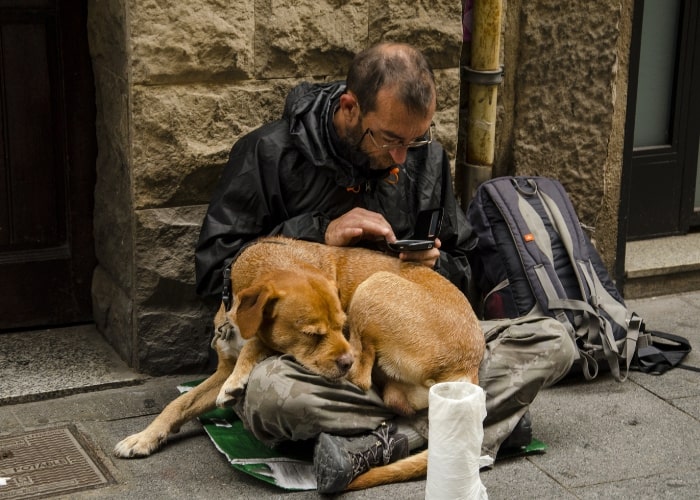MADRID – Housing First is a new care system for the homeless, which skips a number of steps from the current traditional system. As a result, Spanish homeless people can qualify directly for housing.
Nobody wants to live on the streets or in a shelter,’ says Maribel Ramos, deputy director of the Hogar Sí foundation. The organisation is a pioneer in Spain and, with ‘Housing First’, has introduced a new care system for the homeless, allowing them to qualify directly for housing.
Ladder model
This represents a change from the traditional system or ‘ladder model’. Now, in order to get off the streets, homeless people can move up one step at a time. That is as long as they meet certain conditions. From a day centre they can move up to a shelter. And finally, with a bit of luck, they can get help to qualify for a house.
The Housing First Habitat programme aims to ‘skip all these steps and offer housing directly’. Because, Ramos says, ‘a house is not a prize you have to earn, but a right you have’. Hogar Sí started the programme in 2014. It offered the first 28 homes to people who had been living on the streets for years. These people had disabilities or alcohol problems and was difficult for them to find a place in the ‘inclusive’ society.
The right answer
Now, seven years later, 300 people have already received individual housing. The first evaluation of the programme was presented on Tuesday and it shows that Housing First works. Some 96% of the tenants still have their homes after 18 months. Therefore, according to Ramos, this means ‘that people living on the streets are not doing so of their own free will. But because we are not giving them the right answer’.
Advantages
Having one’s own place to live brings more happiness and satisfaction than living in a shelter. It makes ‘simple things’ like eating or cleaning easier. People with their own living space beg less, and call on social services less often. They are less likely to become victims of hatred or violence on the street. Other benefits include better mental health, the social support they receive from family and easier communication. Ramos points to something fundamental: ‘People have control and choice over their lives again. They decide who enters their home, how they organise their time and what they do, something that is impossible on the streets’.
In the minority
In Spain, investments in the Housing First model are being made particularly in Barcelona, Madrid, Asturias and Majorca, but they are still a minority in the market. All too often, people end up in shelters, walk the streets and return to the shelter; a system that excludes people who need care and ultimately leads to long-term homelessness. Ramos asks the government services to move away from the traditional model and adopt the ‘Housing First’ model. This is better for the beneficiaries and also ‘more economically efficient’.
Rent prices are an obstacle
The evaluation shows that the economic investment in the rental flats is comparable to that of maintaining the current infrastructure, such as residences. The costs could be lower if Housing First were fully integrated into the public housing model and if the intermediate steps ‘that do not add value’ were eliminated.
One of the biggest obstacles to a mass introduction of the Housing First system is the high rent in much of Spain. A housing policy issue, according to Hogar Sí, and ‘not the problem of social services’. They are asking for support from the Ministry of Transport and Urban Agenda, which named homeless people as a priority group during the pandemic. Housing First points out that the cost of ‘maintaining a shelter with 300 places’ in major cities is still higher than providing social housing.
More resilience with Basic Income
In Spain, there are between 8,000 and 14,000 homeless people. On average, they live on the streets for 11 years. Ramos states: “If we are able to govern a city of this size, we should also be able to cope with this situation. We have seen homeless people on the streets for so long that we have become used to them. We find it as normal to have street lights as it is to have people sleeping in the streets. We assume that they are part of the street furniture. But, homeless people once they receive the basic income (ingreso mínimo vital) will show


